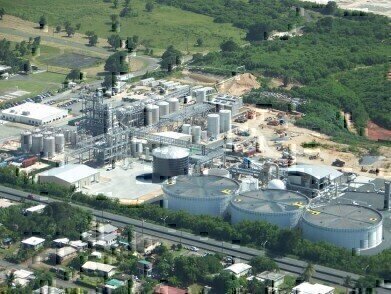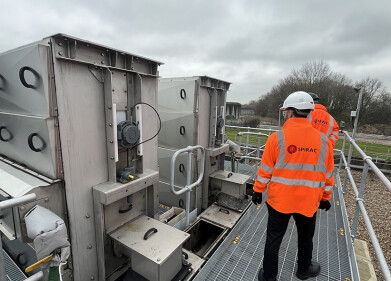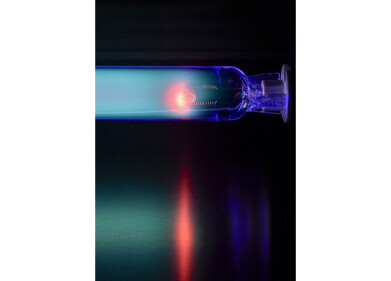Water/Wastewater
Two New Wastewater Treatment Processes that Significantly Improve Efficiency and Reduce Costs
Oct 03 2013
Anaerobic technology plays a key role in using wastewater as a resource. It combines the treatment of production effluents with the generation of biogas and the potential for recovering nutrients thus reducing the environmental impact. Biothane, the anaerobic technology center of the Veolia group (France), has developed two new processes which improve the efficiency and cost-effectiveness of anaerobic wastewater treatment:
- Memthane® is an Anaerobic Membrane Bio-Reactor (AnMBR) which treats high-strength waste streams previously considered economically untreatable through traditional wastewater processes alone. The technology maximises COD and TSS removal and produces a high-quality effluent that can be reused or discharged directly to sewer while generating methane-rich biogas for even greater energy savings.
- Biobed® Advanced is an anaerobic wastewater treatment solution using granular sludge. Compared to conventional processes Biobed Advanced reactors provide a better and more stable performance with a lower footprint thus optimising investment and operating costs. The biogas produced in the process can serve as a source of energy for the production site.
Memthane – Innovative and yet already proven
Memthane opens the door to treating high-strength wastes found in industries such as distilleries and dairies, which were previously considered untreatable from an economic standpoint. It is the perfect solution for streams with a COD of 15,000 - 250,000 ppm, stillage type streams (pot ale, spent wash, thin stillage and vinasse) as well as fat, oil and grease (FOG) containing streams.
The new Memthane process combines two technologies with proven track records: Biothane's anaerobic biological wastewater treatment and Pentair X-Flow's ultrafiltration (UF) membrane separation process. Influent is fed to the anaerobic bioreactor where the organic components are converted into energy-rich biogas. This green energy source offers the possibility of making production plants energy self-sufficient thus reducing the carbon footprint as well as the dependency on costly external fossil fuels. Next, the anaerobic effluent is processed through the UF membrane unit, separating the 'clean' permeate from the biomass. The biomass is returned to the bioreactor, while the ultra-clean filtrate is discharged as particle-free, low BOD/COD effluent. With a COD removal efficiency of >98% Memthane produces superb quality effluent that can be discharged directly to the sewer or re-used. The suspended free effluent can also facilitate easy recovery of nutrients for fertiliser production.
Compared with other technologies Memthane provides a smaller footprint and delivers significant total operating costs reduction, taking into account all elements, including membranes, chemicals, sludge disposal and overall energy savings. The simple, fully automated reactor system is easy to operate and odor-free.
Biobed Advanced – Anaerobic technology at the next level
In wastewater treatment systems using granular-sludge the pre-treated effluent passes a dense and anaerobic granular biomass bed where the COD load present in the wastewater is converted into biogas. In these systems it is all about keeping the biomass in the reactor. The Biobed Advanced reactor combines the high COD breakdown efficiency and the ease of maintaining and producing anaerobic granular sludge of a conventional UASB reactor (Upflow Anaerobic Sludge Blanket) with the cost-effectiveness of a high-loaded system, like the Biobed® EGSB (Expanded Granular Sludge Bed).
The key element of Biobed Advanced is the novel design of the settler placed in the reactor top to separate the treated water from the produced biogas and keep the anaerobic biomass in the system. The sludge retaining efficiency of a settler is determined by the available settling area for particles and the reactor turbulence, which is mainly caused by the biogas produced. In high-rate systems the biogas production is so violent that multi-level gas separation is often used to control the turbulence. But multi-level gas separation reduces the effective reactor volume and thus the performance of the reactor. The new Biobed Advanced settler achieves at higher reactor loading rates not only the sludge retention of a UASB system, but also similar COD removal efficiencies.
The compact and standardised settler design reduces the reactor height and investment costs. Compared to other anaerobic systems Biobed Advanced reactors have a smaller footprint and their superior performance results in lower operating and post treatment costs. During the pilot plant testing the performance could even be further improved by using the novel STAR Control® SMART reactor control system which ensures an even and stable COD loading in time. The reactor can be built as a completely closed system, which ensures no odor emission. To date 30 systems are in operation.
Events
May 23 2024 Beijing, China
May 23 2024 Beijing, China
Jun 10 2024 Algiers, Algeria
Jun 10 2024 Frankfurt, Germany
Singapore International Water Week | Water Expo
Jun 18 2024 Singapore













